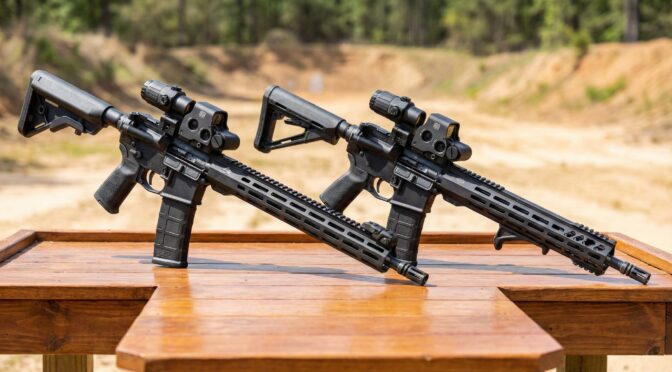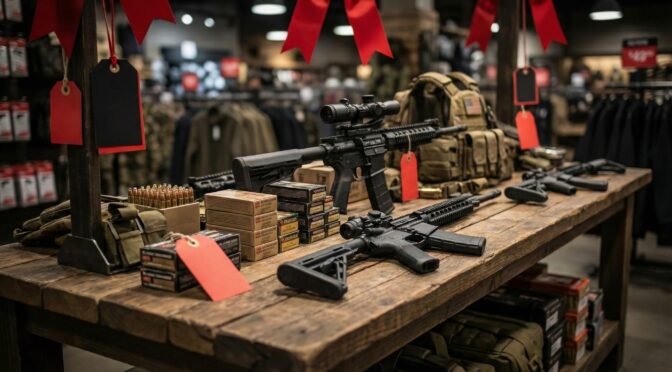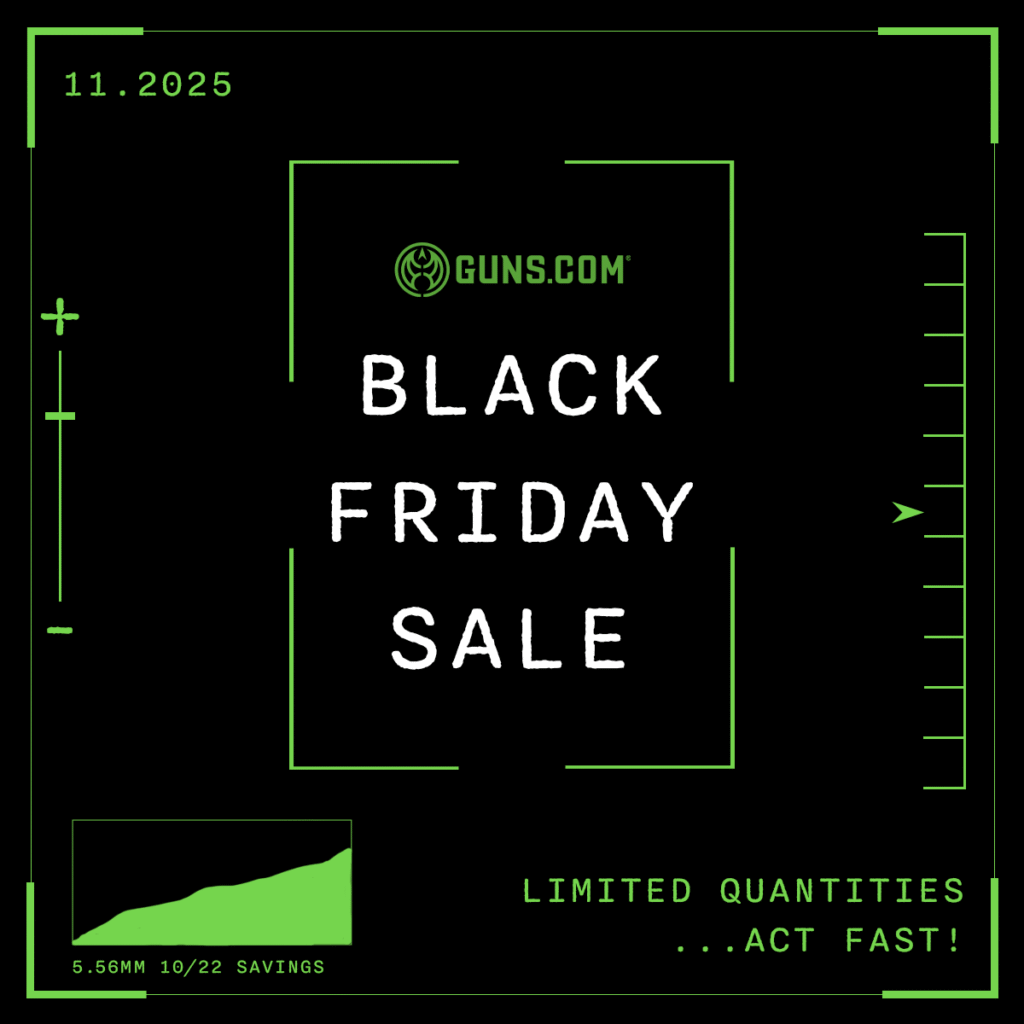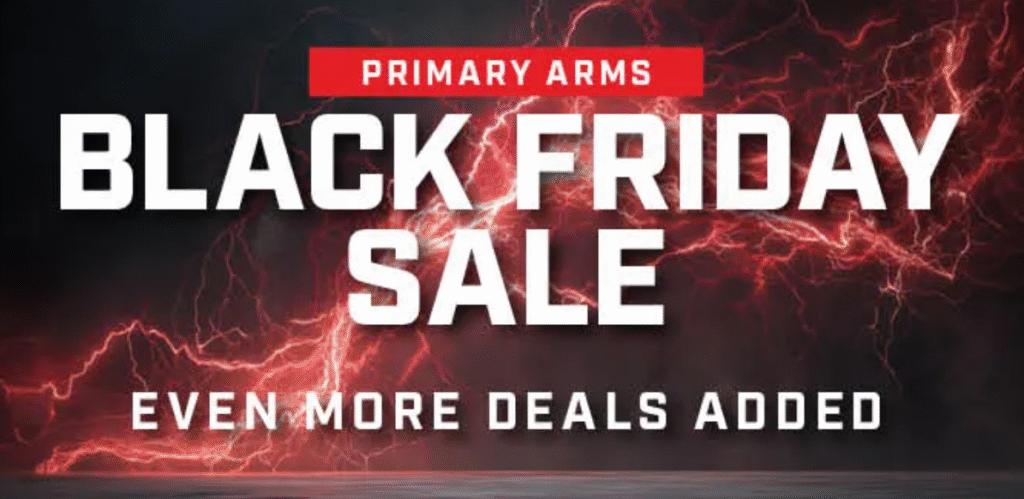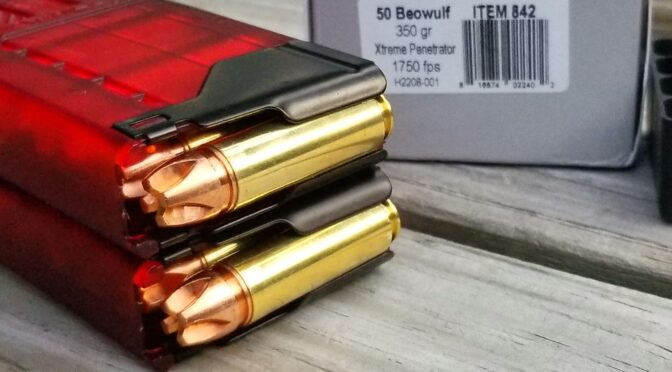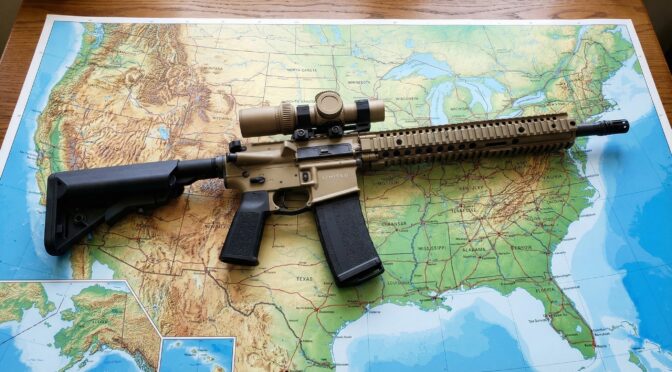The 2025 United States civilian small arms market presents a paradox of choice, characterized by a saturation of AR-15 variants and adjacent platforms that range from commodity-grade assemblies to highly specialized systems commanding premiums exceeding 300% of the baseline. At the apex of this market—frequently designated as “Tier One” or “Duty Grade”—reside a select cohort of manufacturers whose products are marketed not merely as firearms, but as integrated weapon systems engineered for extreme reliability, precision, and durability. This report delivers an exhaustive engineering investigation into the validity of these premiums, specifically analyzing the Knights Armament Company (KAC) SR-15 Mod 2 / KS-Series, Lewis Machine & Tool (LMT) MARS-L, Heckler & Koch (HK) MR556 A4, SIG Sauer MCX Spear LT, and Radian Model 1.
The central hypothesis driving this investigation is whether the performance delta between these platforms and standard military-specification (Mil-Spec) rifles justifies the cost differential, or if the perceived value is primarily a function of brand equity and marketing positioning. The analysis utilizes a multi-disciplinary approach, synthesizing technical specifications, metallurgical composition, gas system fluid dynamics, and high-volume reliability data—including failure logs from high-throughput rental ranges and military acceptance testing protocols such as NATO AC/225 D/14.
The findings indicate a distinct bifurcation in the high-end market. One segment, dominated by KAC and LMT, offers tangible engineering deviations from the original Stoner design that statistically increase Mean Rounds Between Failure (MRBF) and extend component lifespan under adverse conditions. A second segment, typified by Radian, optimizes the standard design through superior tolerancing and surface finishing without altering the fundamental mechanical geometry. The third, represented by HK and SIG, leverages alternative operating systems to introduce specific capabilities—such as folding stocks or “over-the-beach” safety—while introducing distinct trade-offs regarding weight, proprietary logistics, and harmonic stability.
1.0 Introduction: The Tier-One Ecosystem in 2025
The term “Tier One” in the small arms industry is often utilized colloquially to denote price point rather than performance metrics. However, from an engineering perspective, a Tier One system is defined by its ability to exceed the reliability standards set by the US Military’s M4A1 Technical Data Package (TDP). As of 2025, the baseline for a reliable carbine is high; advances in CNC machining and the commoditization of 4150 Chrome Moly Vanadium (CMV) steel have raised the floor of the market. Consequently, for a platform to justify a price tag between $2,500 and $4,000, it must offer capabilities that cannot be achieved by simply assembling high-quality Mil-Spec components.1
The manufacturers selected for this analysis represent the current zenith of production capability. Knights Armament Company (KAC) and Lewis Machine & Tool (LMT) are historically significant as primary suppliers to Special Operations forces, with the KAC SR-15/16 and LMT L129A1/MARS serving as reference standards for reliability.3 Heckler & Koch (HK) represents the European divergence from the Direct Impingement (DI) system, bringing the short-stroke piston architecture of the HK416—the weapon that notably replaced the M4 in several elite units—to the civilian market.5 SIG Sauer, with its MCX platform, attempts to modernize the piston concept with modularity and weight reduction, capitalizing on their recent successes with the US Army’s Next Generation Squad Weapon (NGSW) program.7 Finally, Radian Weapons represents the “boutique” refinement of the AR-15, focusing on ergonomic perfection and machining precision rather than radical mechanical redesign.9
This report evaluates these systems not on their aesthetic appeal or marketing claims, but on their mechanical merits: the rigidity of their receiver sets, the longevity of their pressure-bearing components, the efficiency of their gas management, and their ergonomic interface with the operator.
2.0 Receiver Architecture and Structural Integrity
The foundation of any precision small arm is the receiver set. In the AR-15 platform, the interface between the barrel, upper receiver, and handguard is the critical junction for maintaining zero, particularly when using rail-mounted aiming devices such as IR lasers (PEQ-15, MAWL, etc.) for night vision operations. The standard Mil-Spec method involves threading a barrel nut onto the front of the receiver and clamping a handguard onto that nut. This creates a potential point of flex and rotation, known as “bridging,” which can lead to wandering zeroes.
2.1 The Monolithic Advantage: LMT Defense
Lewis Machine & Tool (LMT) addresses the structural weakness of the Mil-Spec interface through its patented Monolithic Rail Platform (MRP). Unlike standard uppers, the LMT MRP upper receiver and handguard are forged from a single piece of aerospace-grade 7075-T6 aluminum.11 This is not a welded or screwed assembly; it is a singular continuous grain structure.
The engineering implications of this design are profound. By eliminating the threaded interface between the handguard and the receiver, LMT removes the possibility of the handguard rotating or loosening under the harmonic vibration of high-volume fire or the blunt force trauma of field use.4 This provides an uninterrupted, functionally immutable rail space for mounting optics and lasers. From a thermal perspective, the increased mass of the monolithic upper acts as a substantial heat sink, drawing thermal energy away from the chamber area more efficiently than a standard separate handguard, although this contributes to a heavier front-end balance.13
The primary operational advantage of the MRP system, however, is the quick-change barrel capability. The barrel is secured not by a threaded nut, but by two T-30 Torx torque bolts that clamp the receiver around the barrel extension.11 This allows the operator to change calibers (e.g., from 5.56 NATO to.300 Blackout) or barrel lengths (11.5″ to 16″) in under two minutes with a return-to-zero capability typically within 1 Minute of Angle (MOA).4 This modularity is unique to the LMT platform among the rifles analyzed and represents a significant engineering deviation from the Stoner baseline.
2.2 Hybrid Modularity and Flex Issues: SIG Sauer MCX Spear LT
The SIG Sauer MCX Spear LT employs a hybrid receiver architecture designed to facilitate modularity without the weight penalty of a full monolithic forging. The MCX upper receiver allows the handguard to slide into a tongue-and-groove interface, secured by two link screws.14 While this allows for barrel swaps and handguard changes, the design relies on clamping force rather than structural unity.
Significant engineering scrutiny has been applied to this interface following the release of the Spear LT. Reports of “barrel flex”—where the point of impact shifts when force is applied to the handguard—have plagued the platform.15 Technical analysis suggests this is often a misdiagnosis of handguard deflection; the barrel itself is rigid, but the handguard, which holds the front iron sight and laser, can shift relative to the barrel under torque.17
SIG Sauer has attempted to remediate this by adjusting torque specifications (increasing the barrel clamp screws to 60 in-lbs and handguard screws to 45 in-lbs) and refining the clamp design.18 However, the fundamental physics of a clamped two-piece assembly dictates that it will never achieve the absolute rigidity of the LMT monolithic forging. For users relying on rail-mounted lasers for targeting, this introduces a variable of zero-shift that is virtually non-existent in the LMT ecosystem.20
2.3 Enhanced Conventional Interfaces: KAC and Radian
Knights Armament Company (KAC) and Radian Weapons utilize refined versions of the traditional threaded interface.
The KAC SR-15 Mod 2 (and the newer KS-1) utilizes the URX4 (or URX6 in KS series) rail system. This design integrates the barrel nut into the rail itself; the rail is the barrel nut.3 This creates an immensely rigid “IBN” (Integral Barrel Nut) system that requires massive torque to install, effectively fusing the rail to the receiver. While not truly monolithic, it approaches the rigidity of a monolithic upper while maintaining a lighter profile.21 The downside is serviceability; changing a barrel on a KAC SR-15 requires proprietary wrenches and fixtures, often necessitating a return to the factory or a specialized armorer, unlike the user-serviceable LMT.11
Radian Weapons addresses the rotation issue with a proprietary interface. The Model 1 handguard is extended and bolted directly to the upper receiver via a stainless steel anti-rotation pin.22 This pin prevents the handguard from rotating relative to the receiver, solving one of the primary weaknesses of the Mil-Spec design.10 While this ensures alignment, it relies on the strength of the pin and the clamping screws, which, while robust, does not offer the thermal continuity or ultimate shear strength of the LMT forging.
Table 1: Receiver Architecture Comparison
| Feature | LMT MARS-L | SIG MCX Spear LT | KAC SR-15 Mod 2 | Radian Model 1 | HK MR556 A4 |
| Construction | Monolithic Forging (7075-T6) | Extruded Upper, Clamped Rail | Forged, Integral Barrel Nut (URX4) | Billet, Pinned Handguard | Forged, Tongue & Groove Rail |
| Rigidity | Exceptional | Moderate (Flex Concerns) | High | High | High |
| Barrel Change | User Level (2 mins, Torx) | User Level (5 mins, Torx) | Armorer Level (Proprietary) | Armorer Level (Standard) | Armorer Level (Proprietary) |
| Laser Zero | Absolute Retention | Susceptible to Shift | Excellent Retention | Excellent Retention | Excellent Retention |
| Weight | Heavy | Light | Moderate | Moderate/Heavy | Heavy |
Insight: The LMT MARS-L holds the definitive engineering advantage for structural rigidity and operational modularity. The SIG MCX prioritizes weight reduction and modularity at the cost of absolute rigidity. KAC and Radian offer refined, static solutions that maximize the potential of the traditional layout without the weight penalty of the monolithic block.
3.0 Operating Systems and Gas Dynamics
The dichotomy between Direct Impingement (DI) and Short-Stroke Gas Piston systems remains the primary technical divide in the high-end rifle market.
3.1 Refined Direct Impingement: The Stoner Evolution
It is a common misconception that the AR-15 uses “Direct Impingement.” As originally designed by Eugene Stoner, it is technically an internal piston system where the bolt carrier acts as the cylinder and the bolt itself acts as the piston.24 This system is lightweight, inherently accurate due to fewer moving masses, and concentric in its recoil impulse.
Knights Armament has evolved this system further than any other manufacturer. The SR-15 Mod 2 gas system addresses the primary leakage point of the AR-15: the gas block journal. Instead of using taper pins or set screws which can distort the bore or loosen, KAC utilizes a threaded collar and castle nut arrangement to seal the gas block against a shoulder on the barrel.25 This “Mod 2” gas system ensures a perfect seal, preventing the gas erosion and leakage that plagues high-round-count Mil-Spec rifles.25 Furthermore, the gas tube is straight, not bent, eliminating a stress point where tubes often rupture under extreme heat.26
Radian and LMT (in its DI configuration) utilize standard DI architecture. LMT’s innovation here is the angled gas port drilled at 45 degrees rather than 90 degrees.11 This increases gas velocity while reducing port erosion, as the gas does not have to make a hard 90-degree turn, which typically scours the port throat over time. Radian focuses on tuning; their system is ported to run optimally with their Raptor-SD charging handle, which vents gas forward, mitigating the “gas face” associated with suppressed DI shooting.9
3.2 Short-Stroke Piston: The European Approach
Heckler & Koch (HK) MR556 A4 and SIG Sauer MCX Spear LT utilize short-stroke push-rod systems. In these designs, gas is vented into a block where it expands against an external piston, which then drives a solid operating rod rearward to strike the bolt carrier key.27
The HK MR556 system is a direct descendant of the HK416. Its primary engineering virtue is the prevention of heat and carbon transfer to the bolt carrier group (BCG). By venting gas at the block, the BCG remains cool to the touch even after rapid fire, preventing lubricant burn-off.29 The MR556 A4 introduces a modernized adjustable gas block, allowing the user to toggle between “Suppressor” and “Normal” settings—a critical update that addresses the over-gassing issues of previous HK civilian rifles.6
The SIG MCX Spear LT also uses a short-stroke piston but optimizes it for weight. The recoil springs are housed within the upper receiver (above the bolt group), allowing for a folding stock—a capability physically impossible on standard AR-15s due to the receiver extension (buffer tube).31 This makes the MCX uniquely suited for vehicle operations where compactness is paramount.
Engineering Critique: While piston systems run cleaner, they introduce “carrier tilt.” The off-center strike of the piston rod creates a downward torque on the rear of the carrier, causing it to gouge the buffer tube over time.27 HK and SIG mitigate this with enlarged carrier skids and hardened tubes, but the mechanical stress is inherently asymmetrical compared to the coaxial force of the Stoner internal piston (DI) system. Furthermore, the reciprocating mass of the piston assembly increases the total recoil impulse, often described as “snappier” than a tuned DI gun.27
4.0 The Barrel: Metallurgy, Treatment, and Lifespan
The barrel is the heart of the rifle’s performance and the primary consumable component. The variance in materials and treatments among these five contenders reveals the most significant divergence in “duty grade” philosophy.
4.1 The Industry Standard vs. The Upgrade
The Mil-Spec standard for duty barrels is 4150 Chrome Moly Vanadium (CMV) steel with a Hard Chrome Lining. 4150 CMV is a high-carbon alloy designed for high tensile strength and heat resistance. Chrome lining provides a sacrificial layer of extreme hardness (approx. 70 HRC) that resists the abrasive wear of copper jackets and the immense heat of propellant combustion (excess of 3,000°F).33
4.2 The Chrome-Lined Titans: KAC and LMT
KAC and LMT adhere strictly to the philosophy that a fighting rifle must be chrome-lined.
- KAC SR-15 / KS-1: Utilizes cold hammer-forged (CHF) chrome-lined barrels. The KS-1 (13.7″) and SR-15 Mod 2 (14.5″/16″) feature “ball-mill dimpling” (though sometimes restricted to specific lightweight models or the KS series). This dimpling reduces weight significantly while maintaining the stiffness of a bull barrel and increasing surface area for radiative cooling.25
- LMT MARS-L: Utilizes chrome-lined barrels that are also cryogenically treated. This freezing process (-300°F) relieves the internal stresses induced during rifling and machining. The engineering benefit is thermal stability: as the barrel heats up during rapid fire, it does not warp or shift its point of impact (POI) as much as a non-treated barrel.11
4.3 The Stainless Precision: Radian
Radian Weapons opts for 416R Stainless Steel with a Black Nitride (QPQ) finish for the Model 1.9
- Engineering Trade-off: 416R is a softer steel than 4150 CMV. It is easier to machine precisely, which allows Radian to offer a “Sub-MOA Accuracy Guarantee” with match ammunition.36 However, stainless steel erodes faster under high rates of fire, particularly at the throat. Nitriding creates a surface hardness comparable to chrome, but it is a diffusion process, not a plating. Once the nitrided layer (only a few microns thick) wears through, the underlying stainless steel erodes rapidly.34
- Conclusion: The Radian barrel is optimized for precision and low-volume shooting. Under a “duty” firing schedule (e.g., 10,000+ rounds of mixed semi/rapid fire), it will lose accuracy significantly faster than the KAC or LMT equivalents.
4.4 The HK MR556 Controversy: Unlined Steel
The HK MR556 A4, like its predecessors, utilizes a barrel made from HK’s proprietary German steel, often marketed as “Cannon Grade”.6 Crucially, it is not chrome-lined.
- Marketing Claim: HK claims that the unlined bore offers superior accuracy because chrome lining can introduce inconsistencies in bore diameter.30
- Empirical Failure Data: Independent data from Battlefield Las Vegas (BFLV)—a facility that fires millions of rounds annually—paints a damning picture of this decision. BFLV reports that rental MR556 rifles with unlined barrels frequently exhibit “keyholing” (bullets tumbling due to worn rifling) at approximately 10,000 rounds. In direct contrast, chrome-lined LMT and standard Mil-Spec barrels on the same firing line often surpass 80,000 rounds before exhibiting similar failure.38
- Analysis: For a rifle with an MSRP approaching $4,000, the omission of chrome lining represents a severe reduction in operational lifespan. While HK claims the new A4 barrels are “guaranteed for life” against shoot-out 6, the logistical burden of replacing a barrel at 10k rounds (vs 20k-50k for competitors) is a significant engineering oversight for a system marketed as the ultimate durability machine.
Table 2: Barrel Material and Projected Lifespan Analysis
| Rifle Platform | Barrel Material | Lining/Treatment | Est. Accurate Life (Rounds)* | Primary Engineering Focus |
| KAC SR-15 / KS-1 | 4150 CMV (Hammer Forged) | Hard Chrome Lined | 20,000 – 50,000+ | Durability & Heat Resistance |
| LMT MARS-L | 4150 CMV (Cryo Treated) | Hard Chrome Lined | 20,000 – 50,000+ | Durability & Thermal Stability |
| HK MR556 A4 | Proprietary German Steel | Unlined (Nitrided equivalent) | 10,000 – 15,000 | Precision (Civilian Limitation) |
| SIG Spear LT | Chrome Moly Steel | Nitride / Chrome (Var) | 15,000 – 25,000 | Weight Reduction |
| Radian Model 1 | 416R Stainless | Black Nitride | 10,000 – 20,000 | Sub-MOA Precision |
*Estimated life based on mixed semi-auto fire schedules. High rates of fire (automatic) drastically reduce stainless/unlined lifespan. Source: BFLV Data.38
5.0 Critical Component Analysis: The Bolt Carrier Group
In the AR-15 cycle of operation, the bolt is the component subjected to the highest stress. Specifically, the bolt lugs adjacent to the extractor are prone to shearing off after 10,000 to 15,000 rounds due to the asymmetrical support of the cartridge case base.
5.1 Geometric Redesign: KAC E3.2
Knights Armament addresses this failure mode through geometry, not just material. The proprietary E3 (and the 2025-standard E3.2) bolt features:
- Rounded Lugs: The stress risers inherent in the sharp 90-degree corners of standard Star Chamber lugs are eliminated by radiusing the root of the lugs. This drastically increases the fatigue life of the bolt.26
- Dual Ejectors: The E3.2 bolt incorporates two spring-loaded ejectors. This ensures positive ejection of the spent case even when the system is over-gassed by high-backpressure suppressors, preventing “stovepipe” malfunctions.35
- Lobster Tail Extractor: The standard AR extractor relies on a single tiny spring. The KAC “Lobster Tail” design uses two springs and a pivoted fulcrum, providing vastly superior extraction force.39
- Reliability Metric: It is widely accepted in the industry that the KAC E3 bolt can survive well over 20,000 rounds without breakage, a metric rarely achieved by standard pattern bolts.3
5.2 Metallurgical Enhancement: LMT Enhanced Bolt
LMT takes a materials science approach. The LMT Enhanced Bolt is manufactured from a proprietary alloy (widely believed to be AerMet 100), which possesses fracture toughness and tensile strength significantly higher than the standard Carpenter 158 steel.11
- Design Features: Like KAC, LMT utilizes a “lobster tail” dual-spring extractor and radiused lugs. Unique to LMT is the modified cam pin path, which increases the “dwell time” of the unlocking phase. This allows residual chamber pressure to drop further before the bolt attempts to extract the case, reducing the stress on the extractor rim and the bolt lugs.11
5.3 Standard Geometry: Radian
Radian utilizes a “Enhanced Black Nitride M16 Bolt Carrier Group”.9 While manufactured to high tolerances and properly inspected (Magnetic Particle Tested), it retains the standard Mil-Spec geometry. It does not possess the dual ejectors, rounded lugs, or proprietary metallurgy of the KAC or LMT options. While sufficient for most users, it is mechanically inferior in terms of ultimate fatigue life compared to the Tier 1 innovations.
6.0 Human Engineering: Controls and Triggers
At the price point of these rifles ($2,500 – $4,000), operator interface enhancements are mandatory.
6.1 The Ambidextrous Standard
- LMT MARS-L: The “Modular Ambidextrous Rifle System” is widely considered the gold standard for ergonomic layout. It mirrors the controls perfectly; the right-side bolt catch/release is a dedicated paddle located intuitively above the mag release, identical to the left side. This allows for locking the bolt back with the firing hand without breaking grip.4
- Radian ADAC: The “Ambidextrous Dual-Action Control” lower features a unique mechanical linkage. By holding the magazine release button and pulling the charging handle, the bolt is locked to the rear. This simplifies the “lock and clear” malfunction drill significantly.41 The receiver is billet machined, offering a level of surface finish and aesthetic detail that surpasses the forged LMT.9
- HK MR556 A4: The A4 update finally brings a fully ambidextrous lower receiver to the HK platform, featuring right-side bolt catch and release levers. This brings HK to parity with LMT and KAC after years of lagging with non-ambi lowers on the A1/A3 models.6
- KAC SR-15: Features fully ambidextrous controls (selector, mag release, bolt release). The design is functional and robust, though the right-side bolt release is slightly less ergonomic than the LMT paddle or Radian ADAC integration.35
6.2 Trigger Characteristics
- Two-Stage vs. Single-Stage:
- LMT: Typically ships with a specific Two-Stage trigger (often their “Axle” trigger). Two-stage triggers allow for a predictable “take-up” (first stage) followed by a crisp break (second stage). This is preferred for precision work and stress management under duty conditions.42
- KAC: Ships with the KAC 2-Stage Match trigger. It is renowned for a very crisp ~4.5lb break, excellent for accuracy, though some users find it lighter than a standard combat trigger.21
- Radian: Features the Vertex Trigger, a Single-Stage unit with a 3.5-4lb pull. Single-stage triggers have no “take-up”; they break immediately when pressure is applied. This is favored for competition speed shooting (3-Gun) but is often considered less safe for high-stress duty applications compared to a two-stage design.44
- HK: The MR556 A4 uses a Two-Stage trigger tailored for the piston system, typically heavier (4.5-5.6 lbs) to ensure ignition reliability with hard military primers.46
7.0 Reliability Data and Quality Control Trends
The true measure of these systems is not in their specs, but in their failure rates.
7.1 High-Volume Data: The Henderson Defense Logs
Data from Battlefield Las Vegas (BFLV) provides a unique window into the long-term reliability of these platforms.
- Bolt Longevity: BFLV reports that while standard bolts shear lugs at ~20,000 rounds, KAC and LMT bolts routinely exceed this, validating their enhanced designs.38
- Gas System Erosion: Gas tubes on DI guns are consumable items, eroding at the gas block interface. However, the KAC Mod 2 gas system, with its sealed interface, resists this erosion significantly longer than standard pinned blocks.
- Receiver Durability: BFLV noted that they have never lost an LMT or Daniel Defense forged upper/lower to cracking, whereas stamped receivers (AKs) eventually fail at the trunnions.38
7.2 QC Issues in 2024-2025
No manufacturer is immune to production scaling issues.
- LMT QC: Recent reports (2023-2025) have highlighted Quality Control slips at LMT, specifically regarding canted barrels (misaligned in the monolithic upper) and rough machining marks on the interior of receivers.48 While functional reliability remains high, these cosmetic and alignment flaws are unacceptable at the $2,800 price point.
- SIG Spear LT: The “barrel flex” saga—though largely a handguard deflection issue—points to a potential weakness in the clamp design. Recent production runs have updated torque specs (60 in-lbs for barrel screws), which mitigates but does not eliminate the issue of zero-shift for rail-mounted lasers.18
8.0 The 2025 Outlook: KS-1 and the Future
The release of the KAC KS-Series (KS-1) to the civilian market represents the next evolution of the SR-15. Adopted by the British Royal Marines as the L403A1, the KS-1 features a 13.7″ dimpled heavy barrel and the new URX6 rail.35
- Implication: The KS-1’s dimpled barrel moves the center of gravity rearward, improving handling while maintaining the thermal mass of a heavy profile. This addresses the primary complaint of the SR-15 (barrel profile heat sensitivity) and the LMT (front-heavy balance). As the KS-series becomes available, the standard SR-15 Mod 2 may be viewed as a legacy platform.51
9.0 Conclusions: Hype vs. Reality
Based on the engineering analysis, the market stratification is as follows:
9.1 The Engineering Leaders (Not Hype)
Knights Armament (SR-15/KS-1) and LMT (MARS-L) are not hype. They represent the only two platforms in this analysis that offer fundamental mechanical improvements over the Mil-Spec TDP.
- KAC solves the bolt life and gas seal issues.
- LMT solves the receiver rigidity and barrel modularity issues.
- Verdict: If the requirement is a rifle for “end of the world” reliability, high operational tempo, or suppressed usage, the premium for these rifles pays for tangible metallurgical and geometric upgrades that extend the weapon’s service life.
9.2 The Refined Standard (Aesthetic Premium)
Radian Model 1 represents the pinnacle of manufacturing execution, not mechanical innovation.
- Verdict: It is “hype” if one expects it to be mechanically superior to a high-end Mil-Spec rifle (like a Daniel Defense or BCM). It is not hype if the user values perfect surface finish, tight tolerances, and the specific ergonomic advantage of the ADAC lower. It is a luxury tool, whereas KAC/LMT are duty tools.
9.3 The Innovator with Growing Pains
SIG MCX Spear LT offers capabilities the others cannot (folding stock, fire-from-folded).
- Verdict: It is a Tier 1 option for portability and modularity, but currently lags behind LMT in terms of absolute rigidity for precision laser use. It is the best choice for a “backpack” rifle but a secondary choice for a dedicated night-fighting precision carbine.
9.4 The Value Trap
HK MR556 A4 represents the highest ratio of marketing to performance.
- Verdict: High Hype. The omission of a chrome-lined barrel in a $4,000 “duty” rifle is an engineering contradiction. The unlined barrel’s 10,000-round life (vs. 20,000+ for competitors) makes it objectively less durable than rifles costing half as much. The premium is derived almost entirely from the “HK416” brand pedigree rather than civilian-legal performance capability.
Appendix A: Research Methodology
This report was compiled using a multi-source Open Source Intelligence (OSINT) methodology, synthesizing technical documents, user reports, and engineering specifications available as of early 2025.
- Data Collection:
- Manufacturer Technical Data Packages (TDP): Analysis of official specification sheets from KAC, LMT, HK, SIG, and Radian to establish baseline claims regarding weight, materials (7075-T6 vs. 6061, 4150 CMV vs. 416R), and operating features.
- High-Volume Empirical Datasets: Aggregation of maintenance logs and public statements from high-volume rental ranges, specifically Battlefield Las Vegas (Henderson Defense). This data provides failure rates (Mean Rounds Between Failure – MRBF) for bolts, barrels, and gas systems in a sample size (millions of rounds) that cannot be replicated by individual reviewers.
- Metallurgical Standards Review: evaluation of industry standards for barrel steels. This involved comparing the thermal erosion properties of 4150 Chrome Moly Vanadium (Mil-Spec), 416R Stainless (Precision), and proprietary unlined steels against the operational requirements of high-rate-of-fire duty cycles.
- Analysis Framework:
- Comparative Engineering Analysis: Systems were evaluated based on mechanical design superiority (e.g., Monolithic vs. Bridged receivers, Taper pin vs. Castle nut gas blocks) rather than subjective “feel.”
- Failure Mode Effects Analysis (FMEA): The study identified common AR-15 failure points (bolt lug shear, gas port erosion, extractor failure, zero shift) and evaluated how each manufacturer’s design explicitly addresses or exacerbates these modes.
- Military Standard Correlation: Where applicable, commercial performance was contextualized against NATO AC/225 D/14 and US Army TOP 3-2-045 testing standards to define “reliability” in a quantifiable military context.
- Synthesized Insight Generation:
- The report prioritized “second-order” insights. For example, rather than simply stating “LMT has a quick change barrel,” the analysis focused on the rigidity implications of the monolithic receiver required to support that feature, and how that specifically benefits Night Vision operations (laser zero retention).
- Verification Protocols:
- Cross-referencing manufacturer marketing claims (e.g., HK’s “cannon grade steel” accuracy) against third-party performance reports (keyholing at 10k rounds) to separate technical fact from advertising copy.
- Verification of QC trends through multiple independent user reports (forums, video reviews) to identify systemic issues (e.g., LMT canted barrels) versus isolated incidents.
If you find this post useful, please share the link on Facebook, with your friends, etc. Your support is much appreciated and if you have any feedback, please email me at in**@*********ps.com. Please note that for links to other websites, we are only paid if there is an affiliate program such as Avantlink, Impact, Amazon and eBay and only if you purchase something. If you’d like to directly contribute towards our continued reporting, please visit our funding page.
Sources Used
- 15 Best AR-15 Rifles in 2025: The Ultimate List – CAT Outdoors, accessed November 19, 2025, https://catoutdoors.com/best-ar-15/
- TOP 10 Best AR-15 Rifles of 2025! – YouTube, accessed November 19, 2025, https://www.youtube.com/watch?v=8zX4fj5eNa4
- Knights Armament SR-15 E3 Mod 2 Review | 2000 Rounds Later – Primer Peak, accessed November 19, 2025, https://www.primerpeak.com/knights-armament-sr-15-e3-mod-2-review/
- Honest Question: Why Does LMT Have Such A Strong Following? : r/LewisMachineTool, accessed November 19, 2025, https://www.reddit.com/r/LewisMachineTool/comments/15zd1n5/honest_question_why_does_lmt_have_such_a_strong/
- What’s the best factory AR-15, comparing KAC, LMT, and HK? Please explain why and the specific model? Thanks : r/ar15 – Reddit, accessed November 19, 2025, https://www.reddit.com/r/ar15/comments/11bz7h1/whats_the_best_factory_ar15_comparing_kac_lmt_and/
- Heckler Koch Intros New Commercial A4 HK 416 and 417 Models – Guns.com, accessed November 19, 2025, https://www.guns.com/news/2024/11/19/heckler-koch-intros-new-commercial-a4-hk-416-and-417-models
- Looking for objective opinions and experiences (MCX/Virtus/Spear : r/SigSauer – Reddit, accessed November 19, 2025, https://www.reddit.com/r/SigSauer/comments/1ich49s/looking_for_objective_opinions_and_experiences/
- SIG MCX Spear – Wikipedia, accessed November 19, 2025, https://en.wikipedia.org/wiki/SIG_MCX_Spear
- Complete Upper Radian Model 1, accessed November 19, 2025, https://www.radianweapons.com/receivers/upper
- is the radian model 1 top tier : r/RadianWeapons – Reddit, accessed November 19, 2025, https://www.reddit.com/r/RadianWeapons/comments/101c2q6/is_the_radian_model_1_top_tier/
- LMT upper vs. Larue/DD/BCM upper with E-bolt? : r/ar15 – Reddit, accessed November 19, 2025, https://www.reddit.com/r/ar15/comments/13so6y0/lmt_upper_vs_larueddbcm_upper_with_ebolt/
- LMT MRP AR-15 Monolithic Upper Receiver – YouTube, accessed November 19, 2025, https://www.youtube.com/watch?v=uX1CCy4A1iE
- My Take on KAC vs LMT – Reddit, accessed November 19, 2025, https://www.reddit.com/r/kac/comments/18peec9/my_take_on_kac_vs_lmt/
- SIG MCX-SPEAR LT ®, accessed November 19, 2025, https://www.sigsauer.com/media/sigsauer/resources/OPERATORS-MANUAL-MCX-SPEAR-LT-2402988-01-REV00-WEB-FILE.pdf
- Does the Spear LT still have barrel flex issues? : r/SigSauer – Reddit, accessed November 19, 2025, https://www.reddit.com/r/SigSauer/comments/1go9ghs/does_the_spear_lt_still_have_barrel_flex_issues/
- Anyone else also having issue with Spear LT rail rigidity? I just got mine 11” and having same issue as this guy on youtube. Maybe not as bad due to shorter barrel but its still noticeable. Basically impossible to run iron sights. : r/SigSauer – Reddit, accessed November 19, 2025, https://www.reddit.com/r/SigSauer/comments/11c61oh/anyone_else_also_having_issue_with_spear_lt_rail/
- Will Sig fix this barrel deflection issue on the Spear LT? : r/SigSauer – Reddit, accessed November 19, 2025, https://www.reddit.com/r/SigSauer/comments/13v5ppz/will_sig_fix_this_barrel_deflection_issue_on_the/
- Sig Spear LT MAJOR QC Issue – YouTube, accessed November 19, 2025, https://www.youtube.com/shorts/DzqI5GsE7k0
- Aye yo Sig! Update your manual to say use Torx Plus not standard Torx. You owe me the tiny bolt under my hand guard that’s now stripped. : r/SigSauer – Reddit, accessed November 19, 2025, https://www.reddit.com/r/SigSauer/comments/ucn3ku/aye_yo_sig_update_your_manual_to_say_use_torx/
- Sig mcx spear handguard and barrel issues (In my opinion) : r/SigSauer – Reddit, accessed November 19, 2025, https://www.reddit.com/r/SigSauer/comments/13v1bc7/sig_mcx_spear_handguard_and_barrel_issues_in_my/
- Knights Armament SR-15 Mod 2 LPR, a Modern Special Purpose Rifle – Recoil Magazine, accessed November 19, 2025, https://www.recoilweb.com/knights-armament-sr-15-mod-2-lpr-a-modern-special-purpose-rifle-150215.html
- Upper and Hand Guard Set – Radian Weapons, accessed November 19, 2025, https://www.radianweapons.com/receivers/upper-handguard-set
- Radian Model 1 Upper Receiver and 10″ Handguard Set – Wing Tactical, accessed November 19, 2025, https://www.wingtactical.com/firearm-parts/ar-15-parts/ar-15-upper-receiver-parts/upper-receivers/radian-model-1-upper-receiver-and-10-handguard-set/
- Direct Impingement vs. Gas Piston AR-15s: Which is Better? – Bear Creek Arsenal, accessed November 19, 2025, https://www.bearcreekarsenal.com/blog/gas-piston-vs-direct-impingement.html
- KAC-Knight’s Armament 5.56, SR15 KS1 Series Rifle, 13.7″ – Operation Parts, Inc., accessed November 19, 2025, https://operationparts.com/product/kac-knight-s-armament-556-sr15-ks1-rifle-137/
- The SR-15 and the E3 Bolt – KAC TV- Trey Knight Explains – YouTube, accessed November 19, 2025, https://www.youtube.com/watch?v=BRC1Txi21UM
- A Guide to Direct Impingement vs. Gas Piston – Palmetto State Armory, accessed November 19, 2025, https://palmettostatearmory.com/blog/a-guide-to-direct-impingement-vs-gas-piston.html
- Direct Impingement vs. Gas Piston | Operating System Guide – U.S. Arms Company, accessed November 19, 2025, https://www.usarmsco.com/direct-impingement-vs-gas-piston/
- A brief explanation of why DI ARs are more reliable than Piston ARs – Reddit, accessed November 19, 2025, https://www.reddit.com/r/LessCredibleDefence/comments/oxh6t4/a_brief_explanation_of_why_di_ars_are_more/
- Heckler & Koch USA MR556 A4 & MR762 A4 – Frag Out! Magazine, accessed November 19, 2025, https://fragoutmag.com/heckler-koch-usa-mr556a4-mr762a4/
- Sig Sauer MCX-SPEAR LT IR 5.56mm NATO 16in Gen II NiR Cerakote Semi Automatic Modern Sporting Rifle – 30+1 Rounds | Sportsman’s Warehouse, accessed November 19, 2025, https://www.sportsmans.com/shooting-gear-gun-supplies/modern-sporting-rifles/sig-sauer-mcx-spear-lt-ir-556mm-nato-16in-gen-ii-nir-cerakote-semi-automatic-modern-sporting-rifle-301-rounds/p/1899471
- HK mr556 vs SIG spear LT 5.56 : r/ar15 – Reddit, accessed November 19, 2025, https://www.reddit.com/r/ar15/comments/yf4r5r/hk_mr556_vs_sig_spear_lt_556/
- Which AR-15 barrel should I get? 4150 CMV Black Nitride or 416R Stainless Steel?, accessed November 19, 2025, https://veriforcetactical.com/which-ar-15-barrel-should-i-get-4150-cmv-black-nitride-or-416r-stainless-steel/
- QPQ Nitride vs. Chrome Lining: Which is The Better Barrel Finish? – Gun Builders Depot, accessed November 19, 2025, https://www.gunbuilders.com/blog/qpq-nitride-vs-chrome-lining-which-is-the-better-barrel-finish/
- Knight’s Armament KAC KS1 SR-15 E3.2 13.7″ MLOK SBR | Rooftop Defense, accessed November 19, 2025, https://www.rooftopdefense.com/product/knights-armament-kac-ks1-sr-15-e3-2-13-7-mlok-sbr/
- model 1™ rifles – Radian Weapons, accessed November 19, 2025, https://www.radianweapons.com/60546/2464303
- 416R Stainless vs. 4150 Carbon: Which Barrel Steel is Better – Gun Builders Depot, accessed November 19, 2025, https://www.gunbuilders.com/blog/416r-stainless-vs-4150-carbon-which-barrel-steel-is-better/
- Guy who runs a high volume shooting range discusses durability of firearms and parts : r/guns – Reddit, accessed November 19, 2025, https://www.reddit.com/r/guns/comments/3hpxr3/guy_who_runs_a_high_volume_shooting_range/
- Innovation. LMT E and KAC E3. : r/ar15 – Reddit, accessed November 19, 2025, https://www.reddit.com/r/ar15/comments/rgt55m/innovation_lmt_e_and_kac_e3/
- What are the best AR-15 brands/models currently in 2025, and what should I consider when buying one? Is there a top/rank/tier list of AR-15s? What advice can you give me? – Reddit, accessed November 19, 2025, https://www.reddit.com/r/ar15/comments/1lzgtlp/what_are_the_best_ar15_brandsmodels_currently_in/
- Radian Weapons Model 1 16″ 223 WYLDE | Black | Freedom Trading Co, accessed November 19, 2025, https://www.freedomtrading.com/radian-weapons-model-1-16-black-p/r0041.htm
- MARS-L 5.56 Piston(CQBMLK16PS-MARS) – LMT Defense, accessed November 19, 2025, https://lmtdefense.com/product/mars-l-5-56-piston/
- LMT MARS-L 5.56 MRP – Titan Defense, accessed November 19, 2025, https://www.titandefense.com/mlkmrpsc16-mars.html
- vertex – Radian Weapons, accessed November 19, 2025, https://www.radianweapons.com/category/vertex-trigger/1881119
- Radian Weapons Vertex AR-15 Trigger – Single-Stage, 3.5-4 lbs Pull – Bereli.com, accessed November 19, 2025, https://www.bereli.com/acc-0016/
- HK MR556 A4 5.56 x45mm/223 Rem Pistol, 11″ Barrel, M-LOK, 30rd Mag, Black – Bereli.com, accessed November 19, 2025, https://www.bereli.com/81001050/
- mr a4 series – HK USA, accessed November 19, 2025, https://hk-usa.com/wp-content/uploads/2025/01/6645d4e1-3f98-4a78-b3a8-ae5d97767b70.pdf
- Is the LMT 14.5” Piston Barrel Worth It? Full Inspection + Group Results – YouTube, accessed November 19, 2025, https://www.youtube.com/watch?v=Iihoyrht-UY
- 2nd LMT Barrel Review has dropped : r/ar15 – Reddit, accessed November 19, 2025, https://www.reddit.com/r/ar15/comments/1ok7ju8/2nd_lmt_barrel_review_has_dropped/
- KS-1 rifle – Wikipedia, accessed November 19, 2025, https://en.wikipedia.org/wiki/KS-1_rifle
- KAC 2023 Update and Information Dump – Reddit, accessed November 19, 2025, https://www.reddit.com/r/kac/comments/yzrgxz/kac_2023_update_and_information_dump/


